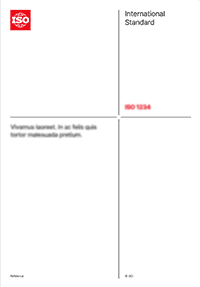Тезис
This secured ship network contains the minimum requirements for the implementation of the secured interconnection of marine electronic equipment on board the ship. This document will support connectivity and data transfer to and from all existing international standards and industrial standards about ship network interfaces such as IEC 61162-450 and Modbus TCP based on the IPv4 Ethernet network. Utilizing IPv6 allows this document to provide a robust, secure, and huge amount of data communication on the ship, between ship to ship, ship to shore, and shore to ship. It supports bi-directional data communication between multi-talker and/or multi-listeners at a speed of 10GB/sec to 100GB/sec. This NP (Secured Ship Network) covers interfacing and connection of all ship systems including bridge equipment, engine, cargo, and other ship systems. Equipment designed to this document will have the ability to share data, including command and status between ship and shore, ship to ship and shore to ship, and the network of IPv4 only and IPv6 only. This NP provides faster transmission of data with inherently improved protection against cyberattacks with message authentication, confidentiality, and integrity with data encryption. Cyber Security is built from the beginning not a 3rd party add-on. Smart Shipping in concert with E-Navigation and Autonomous ship is being developed globally. Further, advancements in Information and Communication Technology (ICT) are being made to enhance navigation safety, improve protection of the sea environment, expand economic opportunities, and optimize the commerce of the shipping industry. Successful implementation of Smart Shipping, e-Navigation, and Autonomous ships includes: information exchange between ship and shore; ship automation using advanced technologies such as the Internet of Things (IoT), Ocean of Things (OoT), and machine-to-machine (M2M); situational awareness and remote ship infrastructure monitoring and control by streaming and image data from the Radar and CCTV; big data analysis for optimal ship operation and cyber security for protection of data. Big data analytics can provide fault diagnosis and predictive maintenance of engines, systems, and equipment. Whole these technologies are able to be implemented under the assumption of secure network operation and fast data exchange. An IPv6 network infrastructure supports the future needs of big data transfer between ship and shore. IPv6 was developed from the onset to provide enhancements to IPv4 resulting in a more robust, secure, and extensible protocol, including native Quality of Service (QoS) functionality. To integrate big data, secure communication, and safe navigation between ship-to-ship, ship-to-shore, and shore-to-ship, vessels of all sizes including SOLAS class ships will need IPv6. The various use cases of IPv6 in maritime industries were illustrated by the activity of a study group established under ISO TC8 WG10 and identified to be mature enough in equipment on board, VTS (Vessel Traffic Service), satellite communication, network infrastructure, and in the electronic chipset to be utilized for developing an embedded system of equipment in maritime industries.
Общая информация
-
Текущий статус: В стадии разработкиЭтап: Регистрация проекта комитета (CD) [30.00]
-
Версия: 1
-
Технический комитет :ISO/TC 8/SC 26
- RSS обновления
Жизненный цикл
-
Сейчас
-
00
Предварительная стадия
-
10
Стадия, связанная с внесением предложения
-
20
Подготовительная стадия
-
30
Стадия, связанная с подготовкой проекта комитета
-
40
Стадия, связанная с рассмотрением проекта международного стандарта
-
50
Стадия, на которой осуществляется принятие стандарта
-
60
Стадия, на которой осуществляется публикация
-
90
Стадия пересмотра
-
95
Стадия, на которой осуществляется отмена стандарта
-
00


